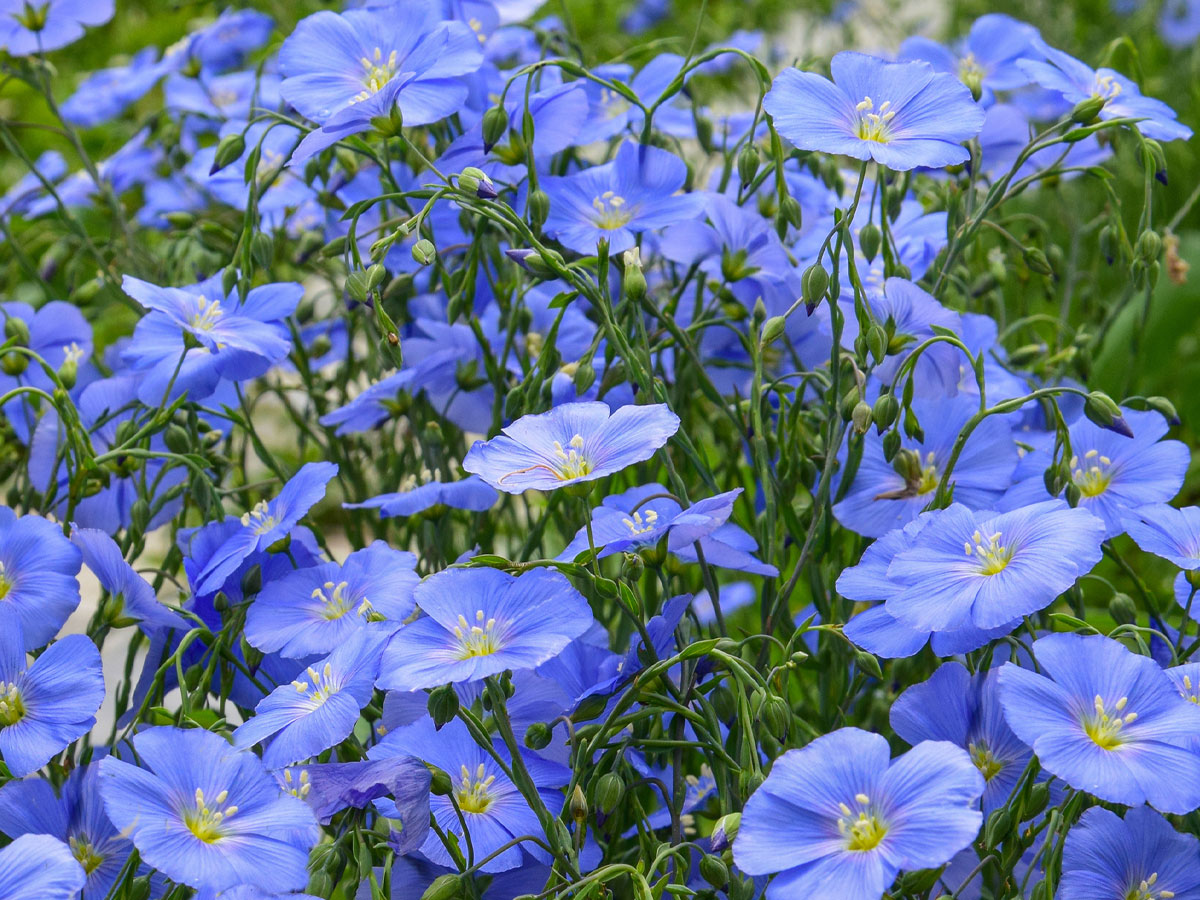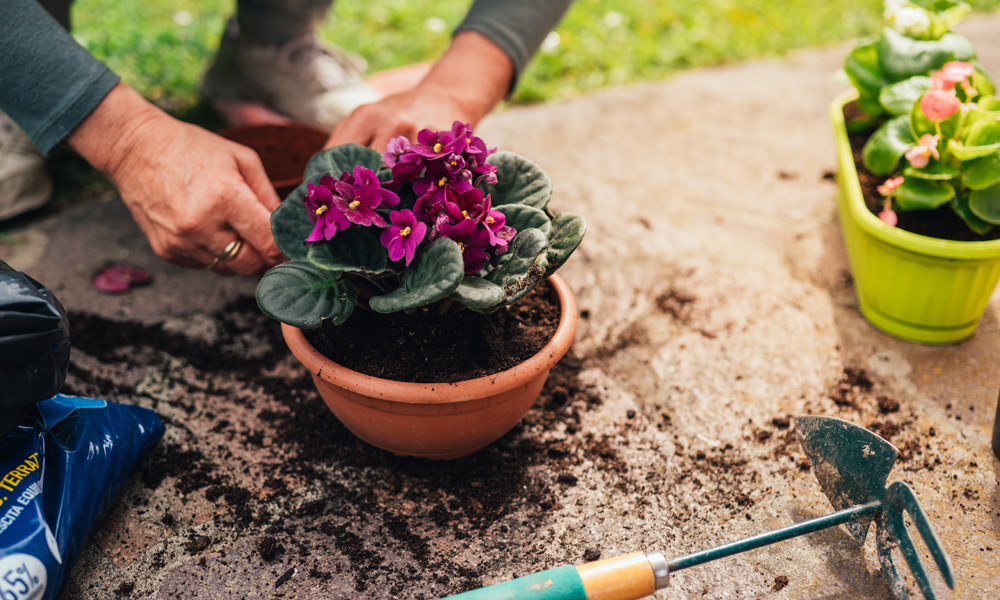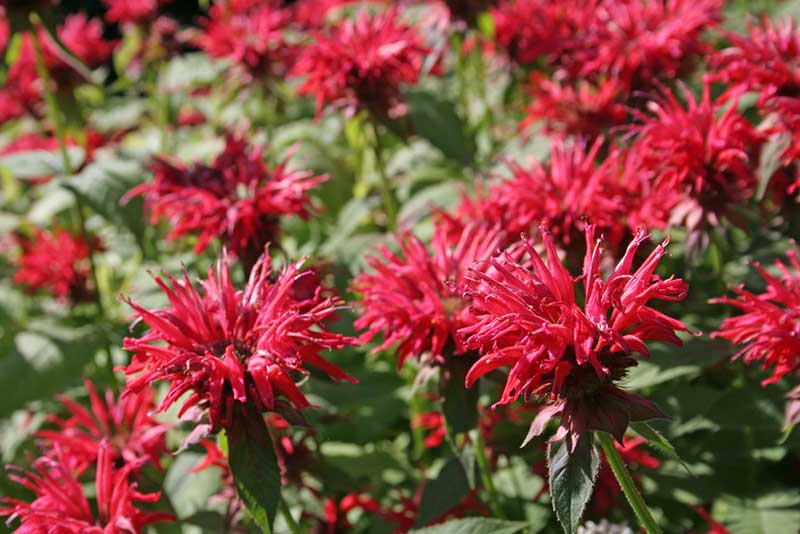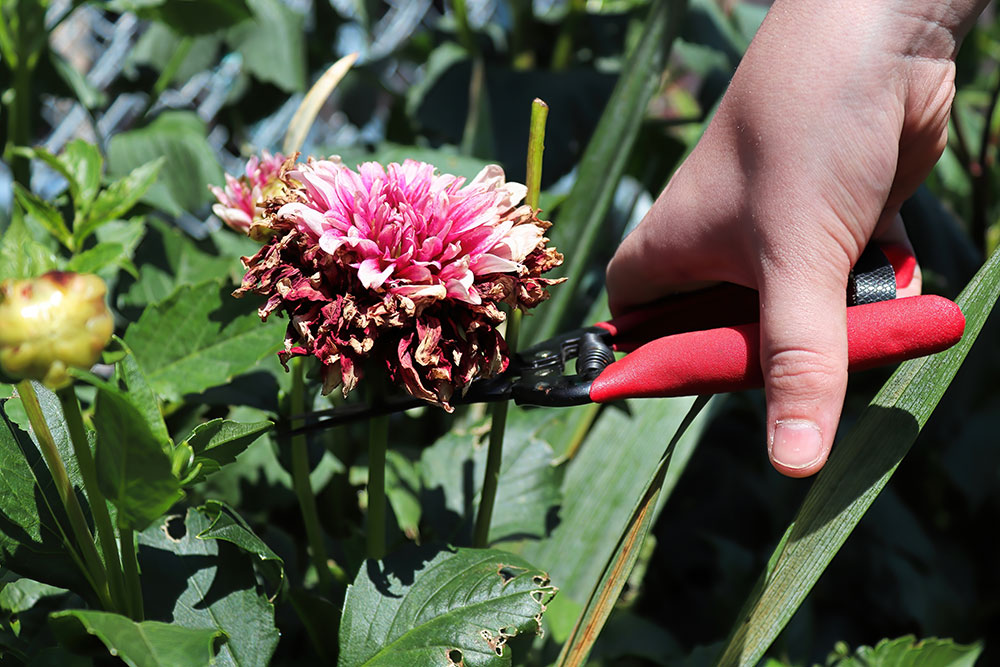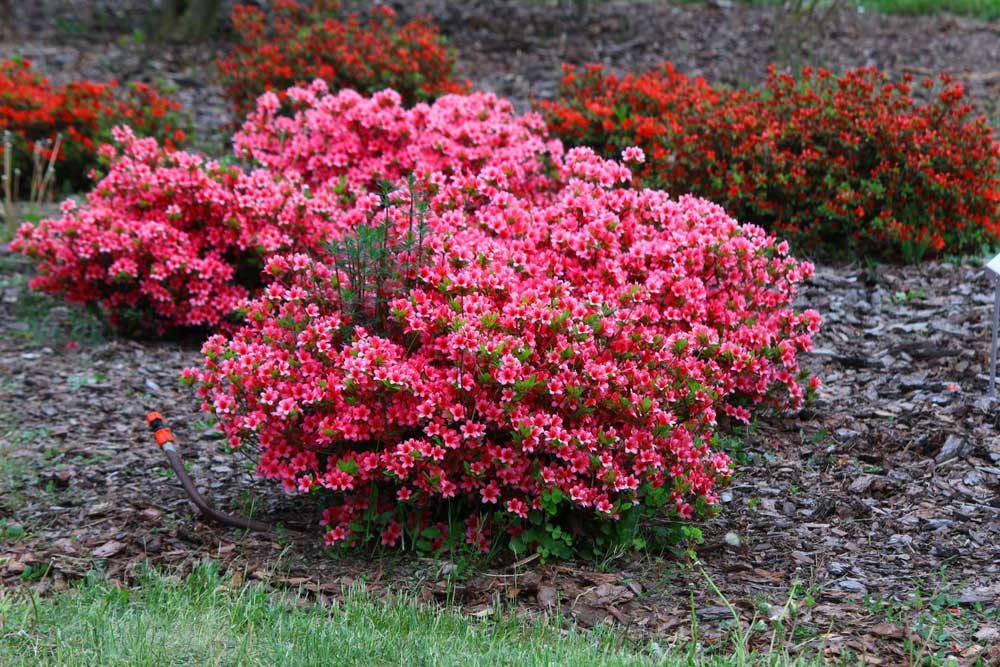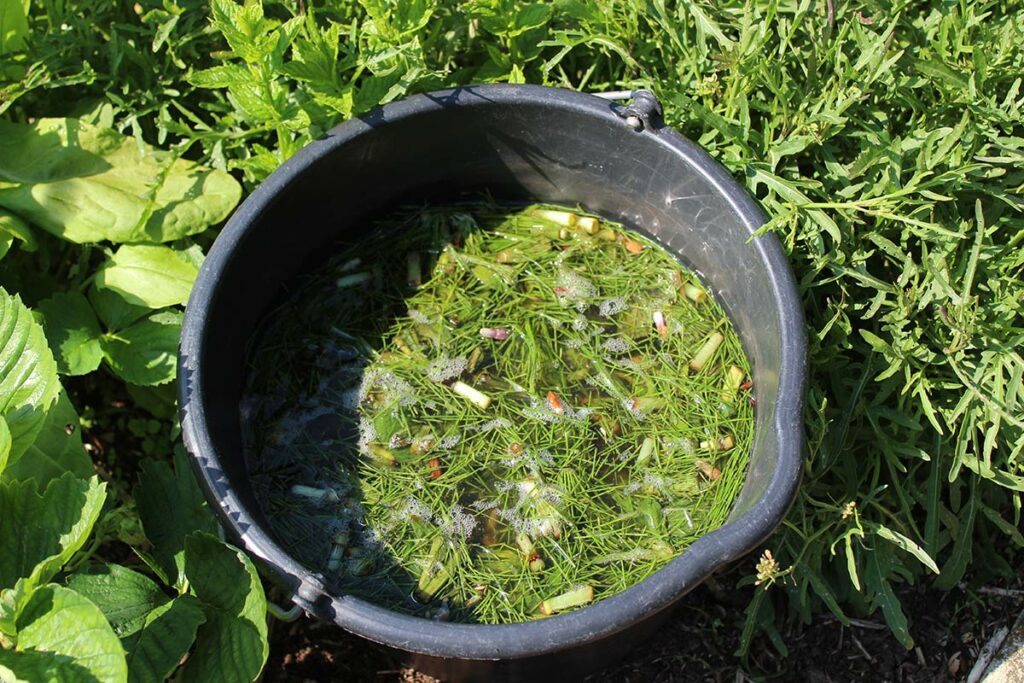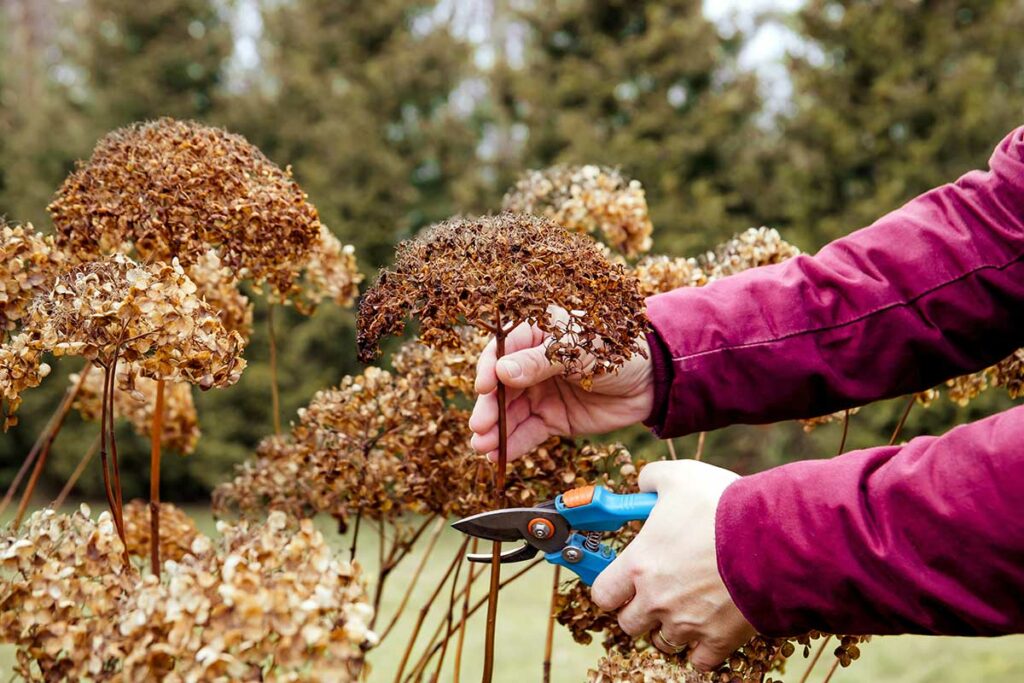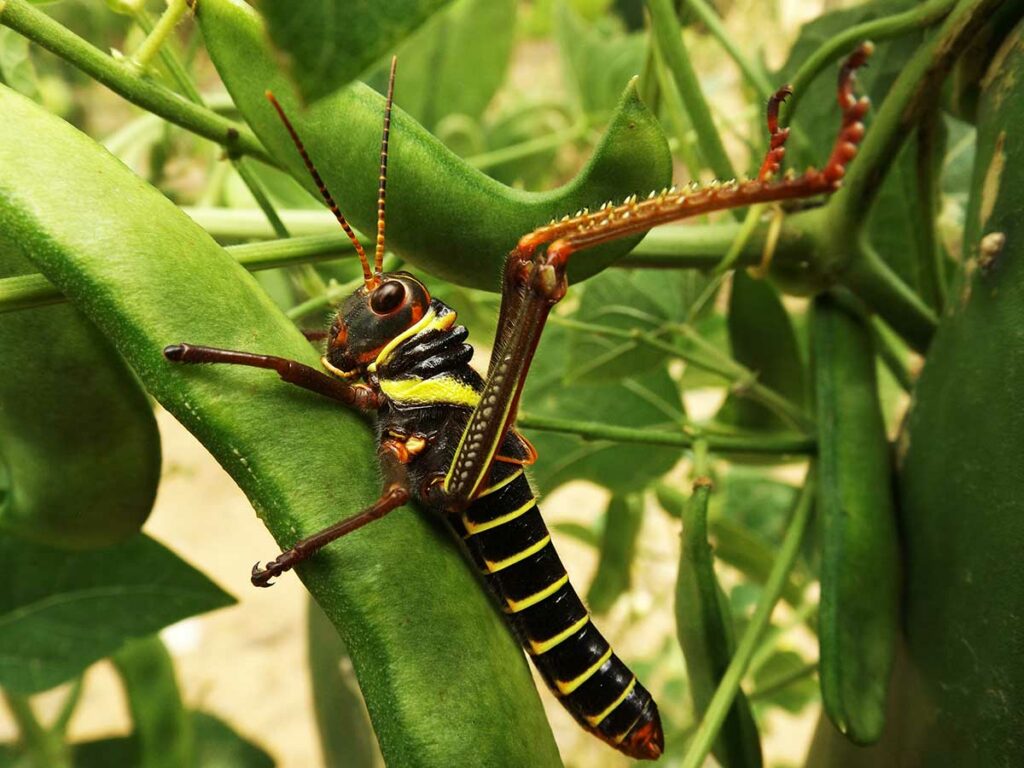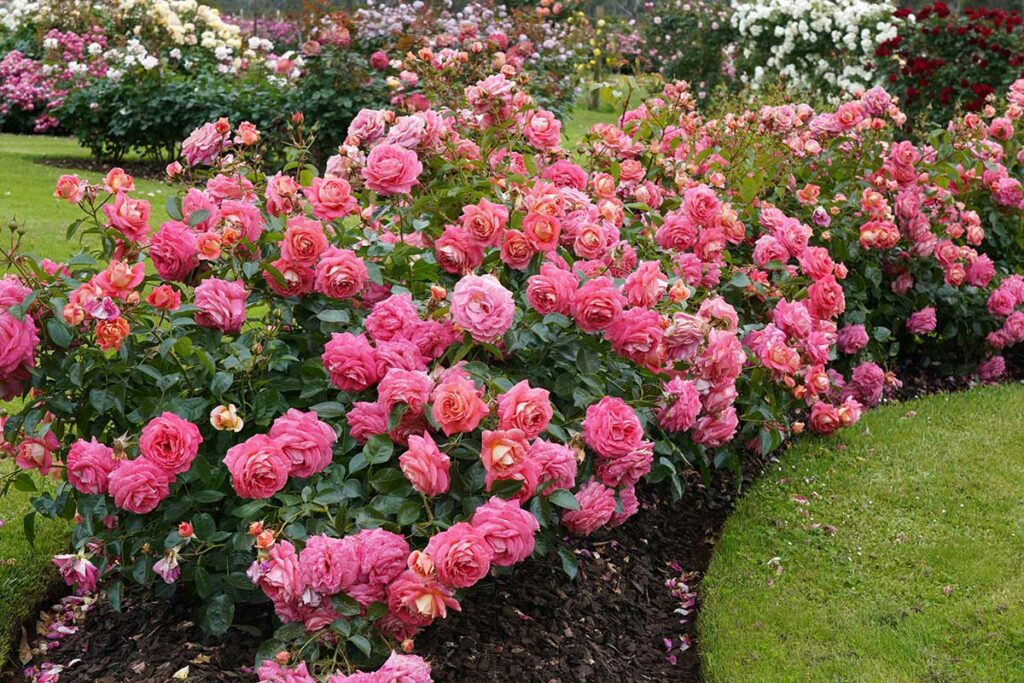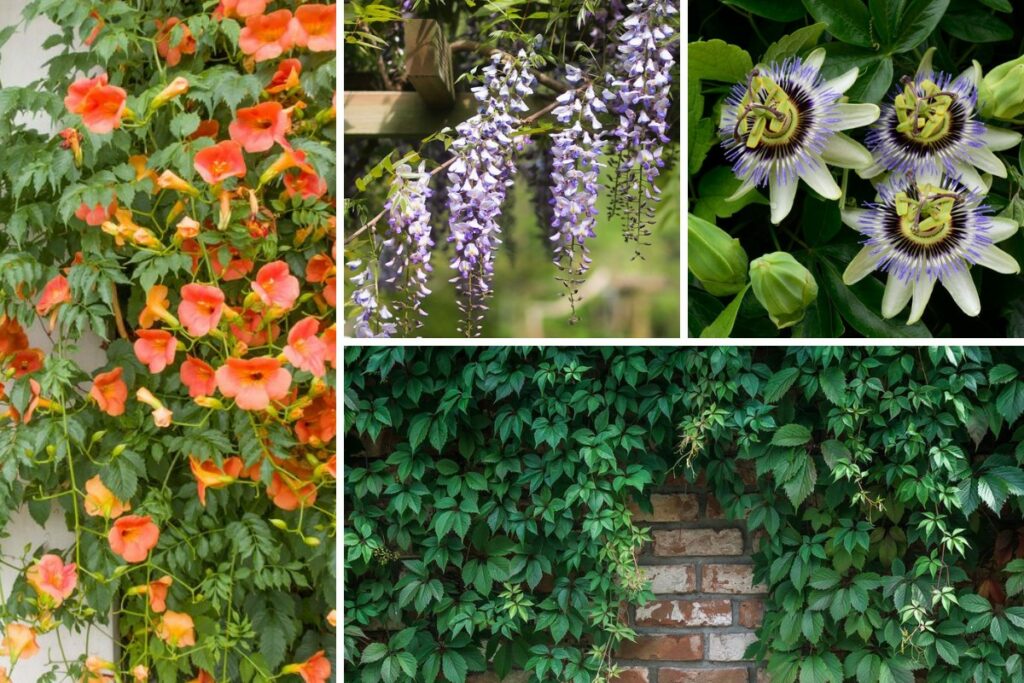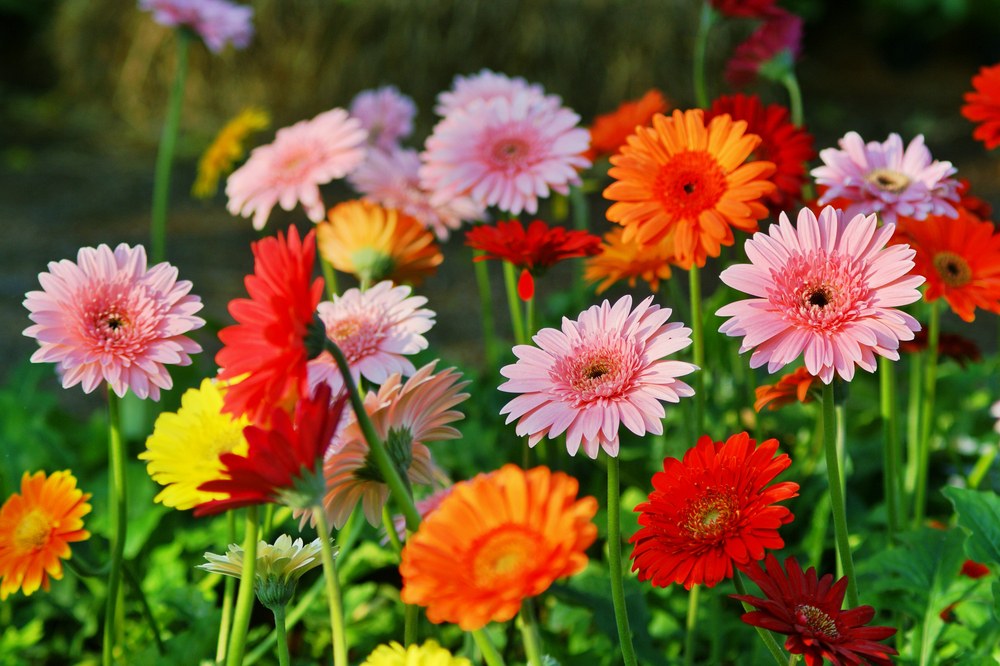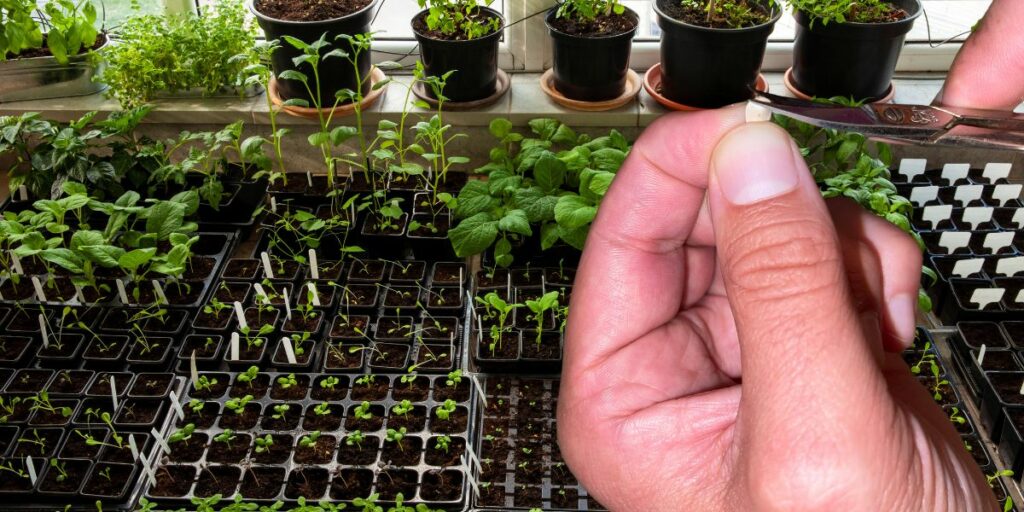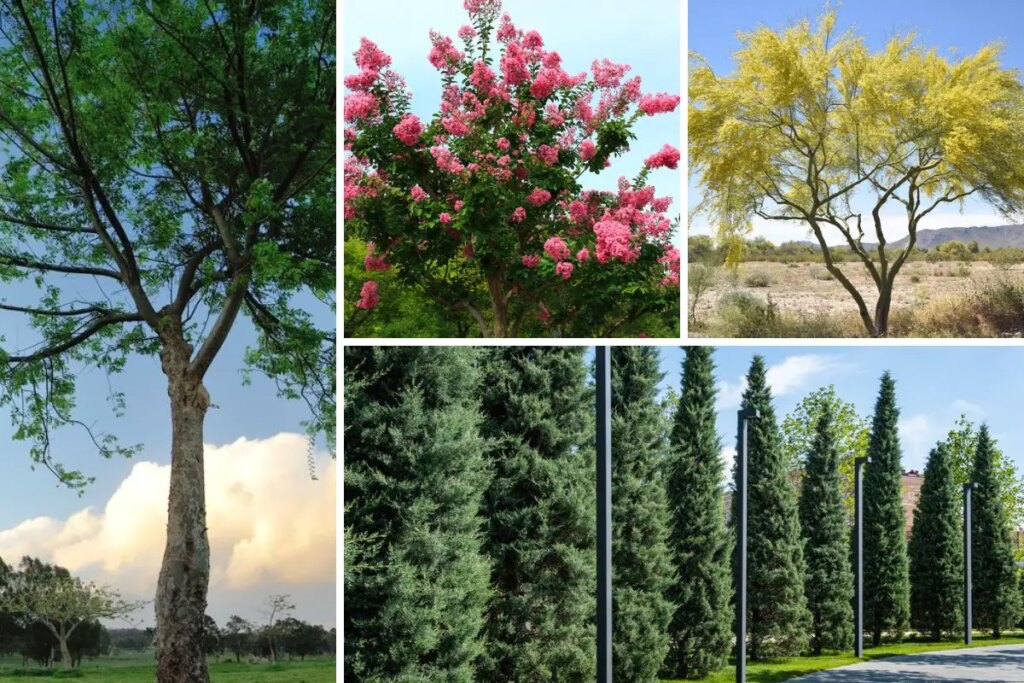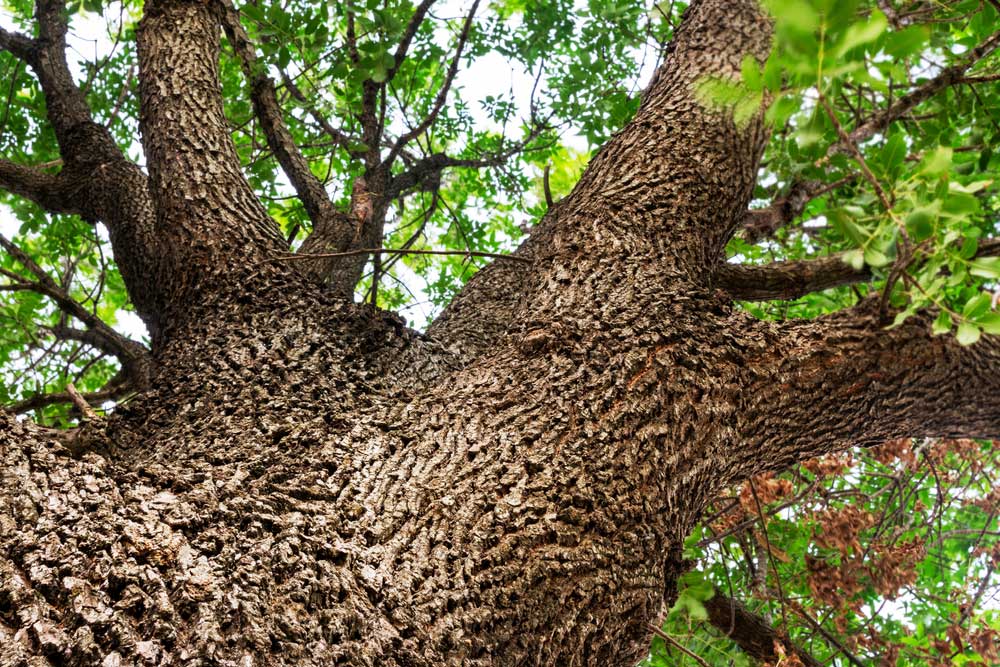
Choosing the right plants for your yard is about more than just looks – it’s about protecting your home too! While many plants can add beauty and value to your property, some can cause serious problems when planted too close to your house.
Some plants release toxic compounds, have invasive root systems that damage foundations, or grow branches that become hazards during storms.
Black walnut trees, for example, release juglone that kills nearby garden plants, while certain fast-growing trees can crack foundations or break water lines with their aggressive roots.
You don’t have to give up on your gardening dreams! By knowing which plants to avoid near your home, you can create a beautiful landscape that enhances your property without risking damage.
Let’s explore 20 trees that should keep their distance from your house so you can make smarter planting choices.
Willow (Salix Spp.)
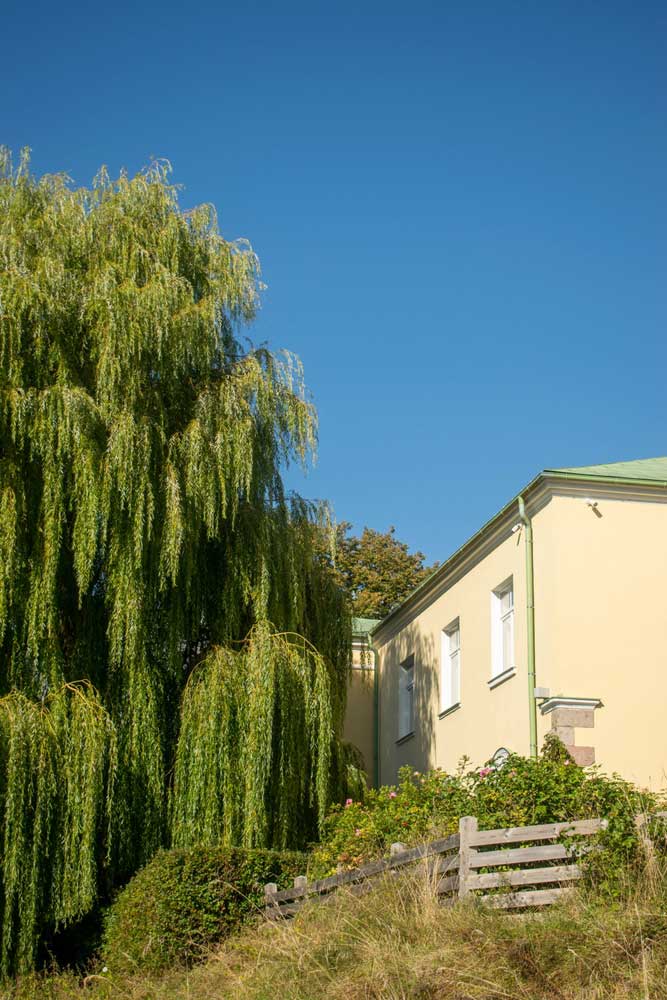
Weeping willows might look beautiful with their graceful, cascading branches, but they should never be planted close to your home. These water-loving trees have incredibly aggressive root systems that seek out moisture at all costs.
Your underground pipes and foundations are no match for willow roots. They can crack foundations, break into water lines, and damage sewer systems in their relentless search for water.
Willows grow quickly and can reach heights of 30-40 feet with an equally wide spread. This rapid growth means their roots extend far and wide, potentially causing problems throughout your property.
These thirsty trees need a lot of water to survive. When planted near houses, they can dry out the soil around your foundation, potentially leading to settlement issues and structural damage.
For safety’s sake, plant willows at least 50 feet away from your home, septic systems, and water lines. If you really love the look of willows, consider dwarf varieties that won’t cause as much damage.
Better alternatives for near-house planting include Japanese maple or dogwood trees. These smaller, less aggressive options provide beauty without threatening your home’s structural integrity.
Remember that proper tree placement is key to avoiding costly repairs down the road. A beautiful tree in the wrong spot can quickly become an expensive problem!
Bradford Pear (Pyrus Calleryana)
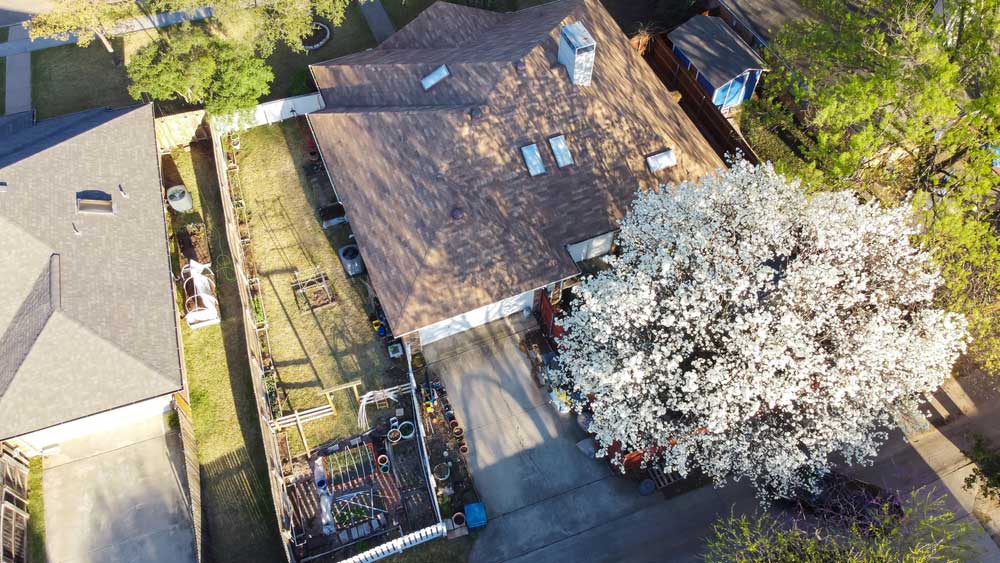
Bradford pear trees might look pretty with their white spring flowers and burgundy fall foliage, but they’re trouble when planted close to your home.
These deciduous trees can grow quite large – reaching 30-50 feet tall and 20-35 feet wide. That’s a lot of tree that could potentially damage your house!
The biggest problem with Bradford pears is their weak branching structure. They’re notorious for breaking during storms, which can cause serious damage to nearby structures and vehicles.
That nasty smell you might notice in spring? That’s the Bradford pear’s distinctive blossoms, which many people find unpleasant when too close to living spaces.
Bradford pears also create dense shade that kills grass underneath, leading to potential soil erosion problems if planted on slopes near your home.
Many areas have actually banned these trees due to their invasive nature. The trees can cross-pollinate with other pear varieties and spread aggressively into natural areas.
If you already have a Bradford pear near your house, you might want to consider removal. Some communities even offer incentives to replace them with native alternatives.
Silver Maple (Acer Saccharinum) And Norway Maple (Acer Platanoides)
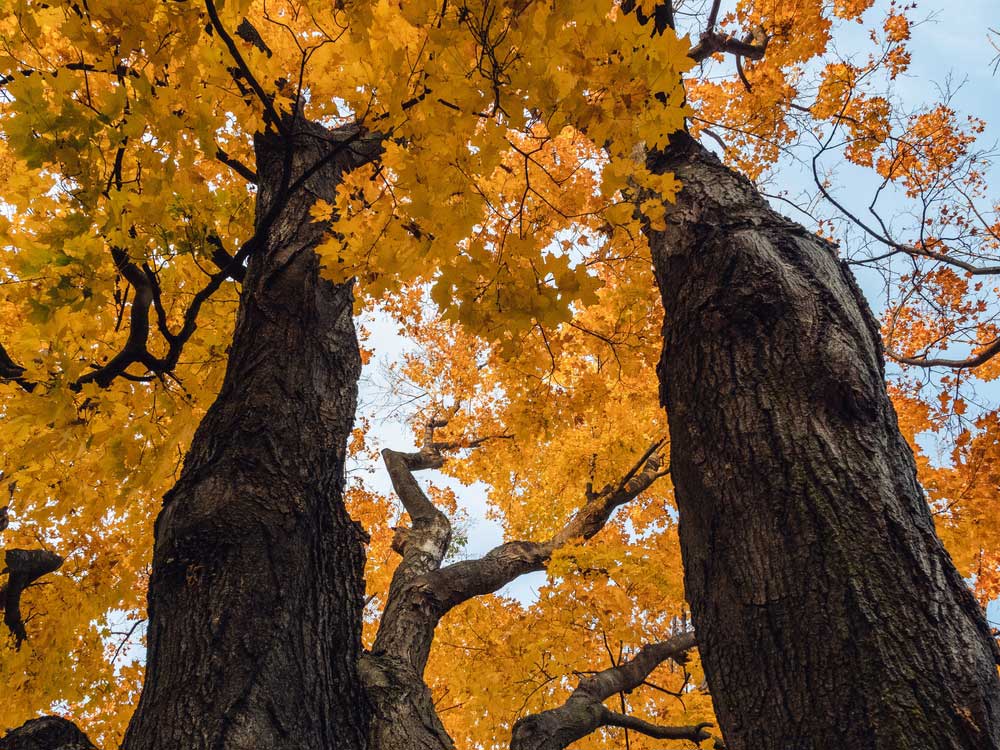
Both Silver Maple and Norway Maple are beautiful trees, but they can cause big problems when planted too close to your house.
Silver Maple grows very fast and can reach heights of 50-80 feet with a wide spreading crown. This native North American tree has a shallow, aggressive root system that can damage foundations, sidewalks, and underground pipes.
Norway Maple, native to eastern and central Europe, grows 65-100 feet tall. Like its cousin, it also has an invasive root system that can cause structural damage to your home.
Both maples are known as “bad companion plants” because they inhibit the growth of nearby plants and grass. Their dense shade and thirsty roots make it difficult for other plants to thrive.
These trees drop a lot of debris throughout the year:
- Seeds (helicopter-like samaras)
- Twigs and branches
- Leaves in the fall season
Silver Maple has particularly weak wood that breaks easily in storms, potentially damaging your roof or windows. Their branches can grow quite large and heavy.
If you love maples, consider planting them at least 20-30 feet away from your house. For smaller spaces, look for dwarf varieties or different tree species that won’t threaten your home’s structure.
While their wood makes beautiful furniture with golden to reddish-brown tones, it’s best to admire these maples from a safe distance!
Ash (Fraxinus Spp.)

Ash trees have a stately appearance and strength that might make them seem perfect for your property. Their distinctive compound leaves and interesting bark patterns add character to any landscape.
Unfortunately, ash trees are currently facing a serious threat – the emerald ash borer. This invasive pest has been devastating ash populations across many regions.
If you plant an ash tree close to your house, you might need to invest in regular treatments. Protecting your ash tree requires inoculation every two years, which can become expensive over time.
Consider alternative tree species that aren’t currently fighting for survival. There are many beautiful shade trees that will provide similar benefits without the ongoing maintenance concerns.
When planning your landscape, think about long-term health and sustainability. Choosing trees that aren’t vulnerable to widespread pests can save you headaches and expenses down the road.
Native alternatives can offer similar aesthetic appeal while being better suited to your local environment. Ask your local nursery about resilient shade trees that will thrive in your area.
Black Walnut (Juglans Nigra)
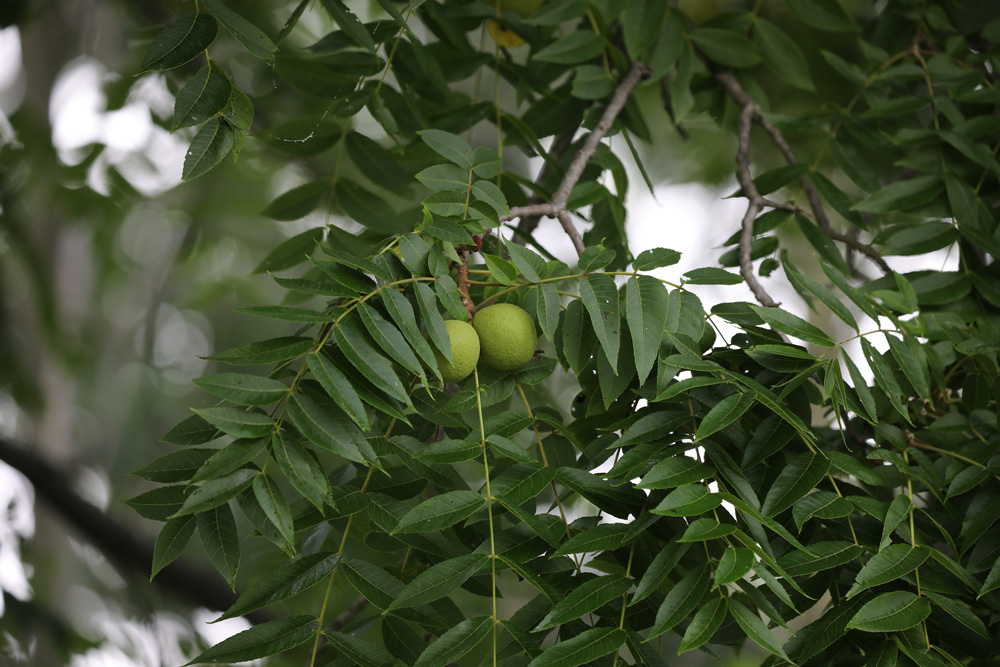
Black walnut trees are beautiful, but they should never be planted near your house. These large trees can grow up to 100 feet tall and have extensive root systems that might damage your home’s foundation.
The main issue with black walnut trees is that they produce a toxic substance called juglone. This chemical is found in all parts of the tree – roots, leaves, stems, and especially the nut hulls.
Juglone makes it hard for many other plants to grow nearby. When you plant a black walnut near your home, you might struggle to grow flowers, vegetables, or other ornamentals in your yard.
The tree’s toxicity extends into the soil where it prevents other plants from competing for space. This makes landscaping around your home very challenging if you have a black walnut tree close by.
Black walnuts also drop nuts and debris that can stain driveways and create messy cleanup jobs. The falling nuts can damage cars or outdoor furniture too.
If you already have a black walnut on your property, try to keep it at least 50-60 feet away from your house. This distance helps reduce potential foundation damage and gives you space to grow juglone-resistant plants closer to your home.
Running Bamboo (Phyllostachys Spp.)
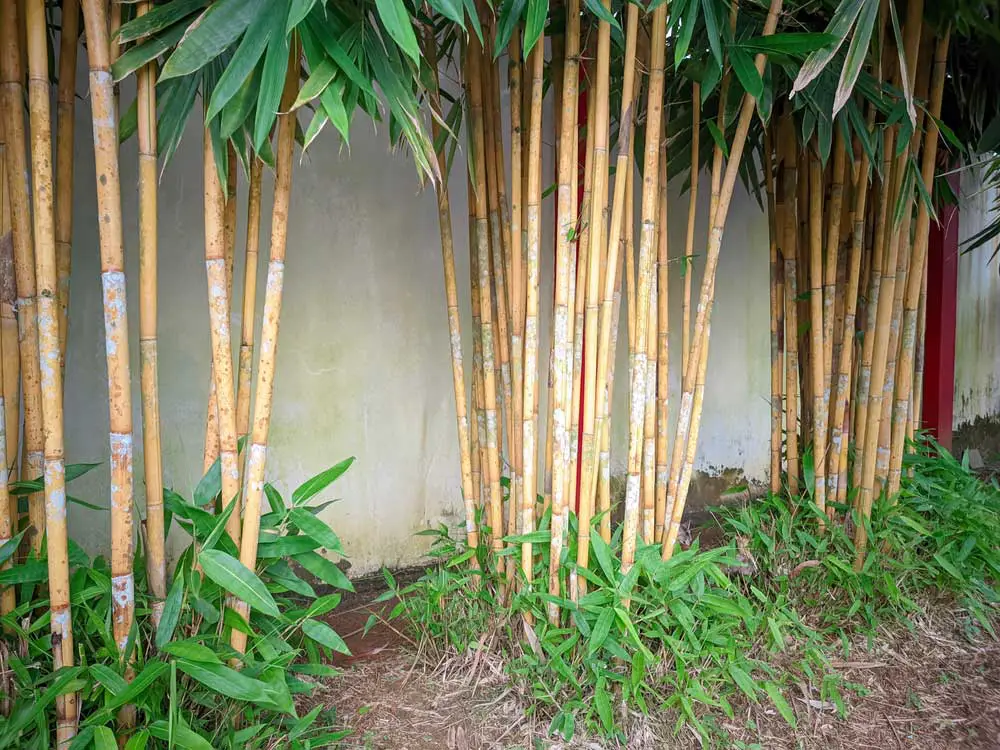
Running bamboo is one of the most problematic plants to grow near your home. Unlike its cousin, clumping bamboo, running bamboo spreads aggressively through underground rhizomes that can extend up to 20 feet per year!
These invasive plants can damage foundations, crack driveways, and push through tiny gaps in concrete. The underground root system is nearly impossible to fully remove once established, making it a homeowner’s nightmare.
If you still want to grow running bamboo, plant it at least 30-50 feet away from any structures. Installing a physical barrier made of high-density polypropylene that’s at least 30 inches deep around the planting area is essential to contain its spread.
Warning signs of bamboo problems:
- Shoots appearing far from the original planting site
- Cracks in nearby concrete or asphalt
- Bamboo growing through garden beds or lawn areas
In Connecticut and other states, running bamboo is considered so problematic that there are specific regulations about its planting and containment. Regular maintenance is crucial if you decide to keep this plant.
To control existing running bamboo, cut stems and apply herbicide in a single growing season. Even with treatment that’s nearly 100% effective, check treated areas in late October for any small shoots that may have emerged.
Tree Of Heaven (Ailanthus Altissima)
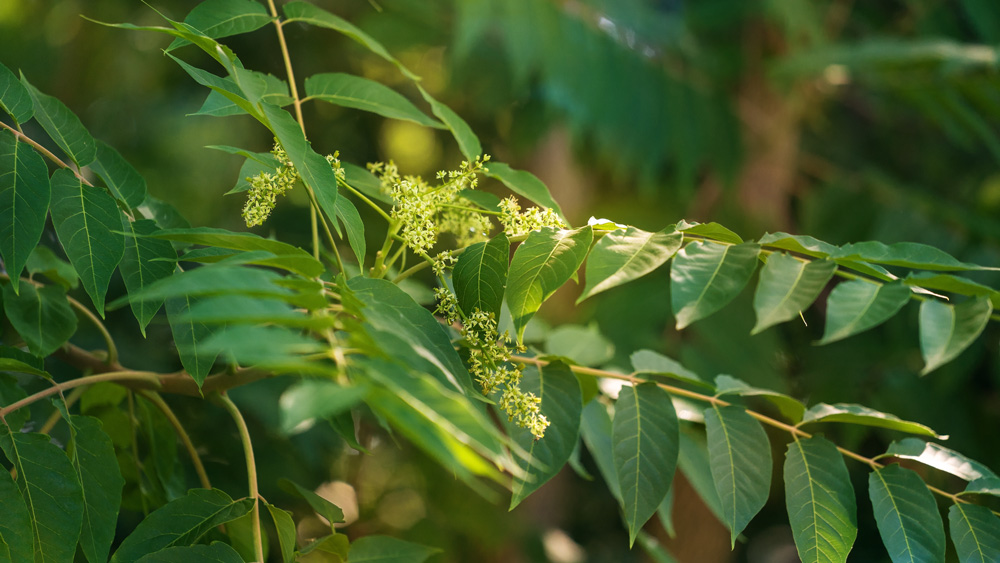
Tree of Heaven, scientifically known as Ailanthus altissima, is a fast-growing deciduous tree you should definitely keep away from your home. Originally from China and Taiwan, this invasive species was introduced to the United States in the late 1700s and has become a common sight in urban areas.
This aggressive tree can reach heights of 60-75 feet tall with a spread of 35-50 feet wide. Its rapid growth rate means it can quickly become a problem near your house.
Tree of Heaven is incredibly resilient. It can grow in poor soil conditions, withstand pollution, and even sprout from cracks in pavement or building foundations. This adaptability makes it particularly troublesome when planted close to homes.
Also known as Chinese sumac or stinking sumac, this tree has an unpleasant odor that you might notice, especially when its leaves or bark are crushed.
Why avoid planting near your house:
- Can damage foundations with aggressive root systems
- Grows extremely quickly, becoming difficult to control
- Highly invasive, spreading rapidly into nearby areas
- Can grow through cracks in concrete and pavement
- Not shade tolerant, preferring disturbed areas like roadsides and woodland edges
If you spot Tree of Heaven on your property, consider removing it, especially if it’s near your home’s foundation. Its ability to damage structures makes it one of the worst trees to have close to your house.
Chinese Wisteria (Wisteria Sinensis)
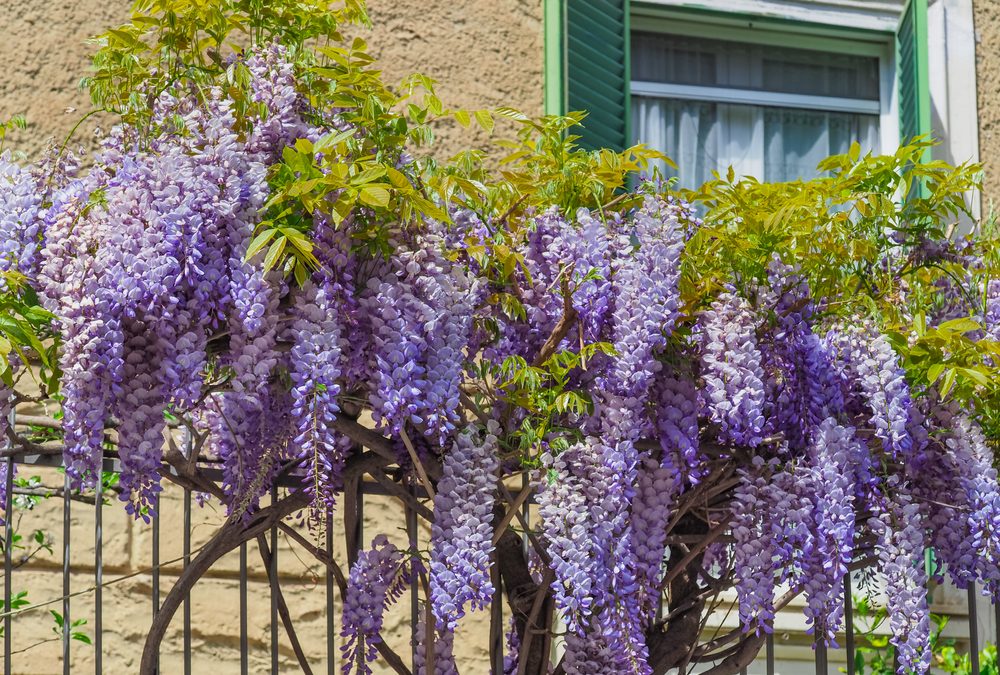
Chinese Wisteria might look beautiful with its cascading purple flowers, but keeping it away from your house is essential. This aggressive climber can quickly take over structures and cause serious damage.
Native to China, this woody vine grows incredibly fast and can reach heights of 25 feet or more. Its strong stems can wrap around gutters, break into foundations, and even pull down arbors with their weight and strength.
The root system is another concern. Chinese Wisteria develops powerful roots that can damage underground pipes, foundations, and sidewalks as they spread through your yard.
If you still want to enjoy Wisteria, plant it far from buildings—at least 20 feet away is recommended. Consider growing it on a sturdy, isolated pergola or trellis where it can’t reach your home.
Maintenance is crucial if you already have this plant. Regular pruning twice a year helps control its growth and prevents it from becoming invasive.
Warning Signs of Problem Wisteria:
- Vines creeping under siding or into gutters
- Cracks appearing in nearby concrete
- New shoots popping up far from the main plant
- Structural damage to arbors or trellises
For safer alternatives, look into American Wisteria (Wisteria frutescens), which is less aggressive while still offering beautiful blooms.
Eucalyptus (Eucalyptus Spp.)
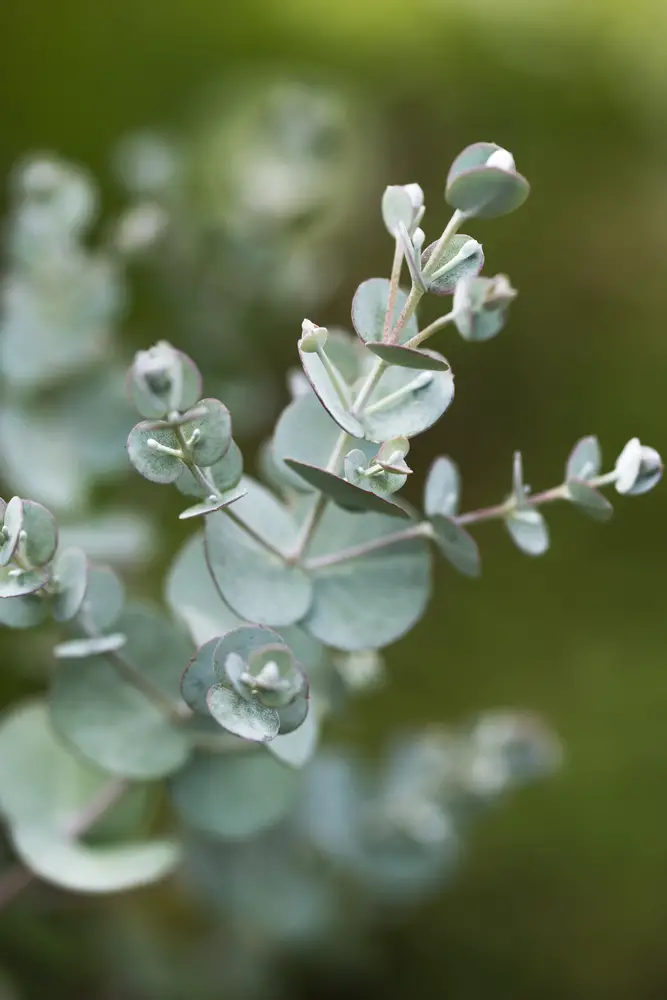
Eucalyptus trees might look beautiful with their silvery-blue leaves and peeling bark, but they can cause big problems near your house. These fast-growing trees from Australia can reach heights of over 60 feet in just a few years!
The root systems of eucalyptus are incredibly aggressive and extensive. They can damage your home’s foundation, crack concrete walkways, and even break into underground pipes. You’ll definitely want to keep these trees at least 30 feet away from any structures.
Another reason to be cautious is their flammability. Eucalyptus trees contain oils that make them highly combustible. In dry conditions, they pose a serious fire hazard if planted too close to your home.
These trees are also notorious for dropping limbs without warning. This “sudden limb drop” can happen even on calm days, making them dangerous to have near houses, driveways, or play areas.
Why eucalyptus can damage your property:
- Aggressive, invasive root systems
- Extremely fast growth rate (up to 6+ feet per year)
- High water consumption that can dry out soil
- Flammable oils in leaves and bark
- Tendency to drop heavy branches unexpectedly
If you love eucalyptus, consider growing dwarf varieties in pots instead. You’ll still enjoy their fragrant leaves and interesting appearance without risking damage to your home.
Lombardy Poplar (Populus Nigra)
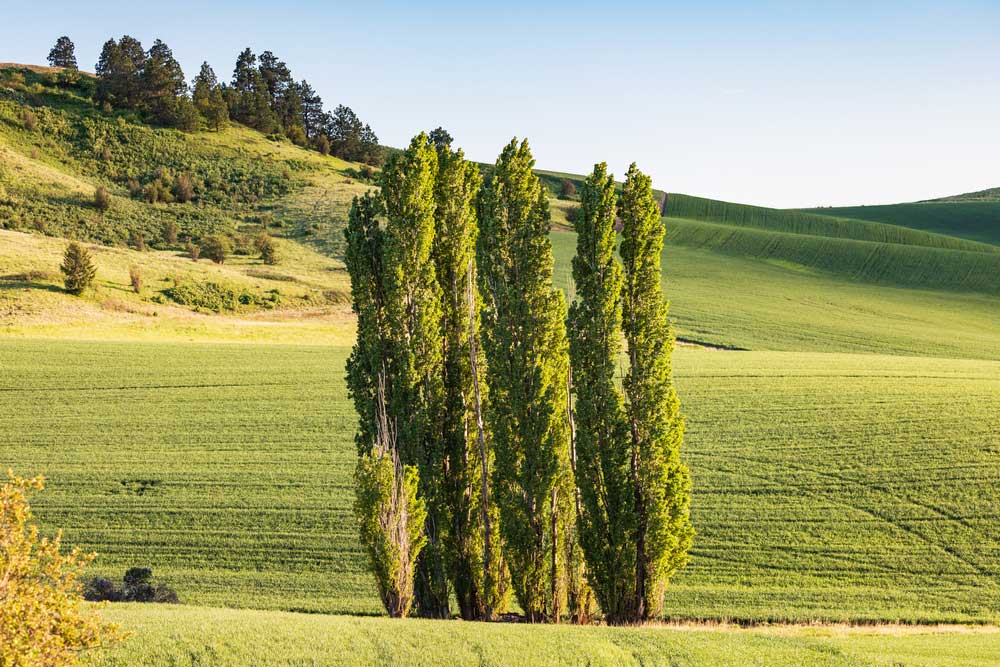
Lombardy poplar trees are super fast growers, shooting up 4-5 feet each year! While this makes them tempting as quick privacy screens, they’re one of the worst trees to plant near your home.
These tall, columnar trees have a unique look with branches that grow close to the ground and point upward, parallel to the trunk. But don’t let their good looks fool you!
Their aggressive root systems can damage your home’s foundation, driveway, and underground pipes. These roots also send up suckers everywhere, creating a maintenance nightmare in your yard.
Lombardy poplars are notorious for their short lifespan (often just 10-15 years) and susceptibility to diseases, especially cytospora canker. This means you’ll likely need to remove a sick tree after investing time and money into growing it.
If you still want to plant these trees, keep them at least 5-8 feet apart from each other and far from your house. However, consider these alternatives instead:
- Native trees with wildlife value
- Camellia sasanqua (for zones 7-9)
- Other columnar trees with less aggressive roots
Remember, Lombardy poplars need full sun and well-draining soil. But even with perfect conditions, the maintenance headaches and potential property damage make them a poor choice for most home landscapes.
Oak (Quercus Spp.)
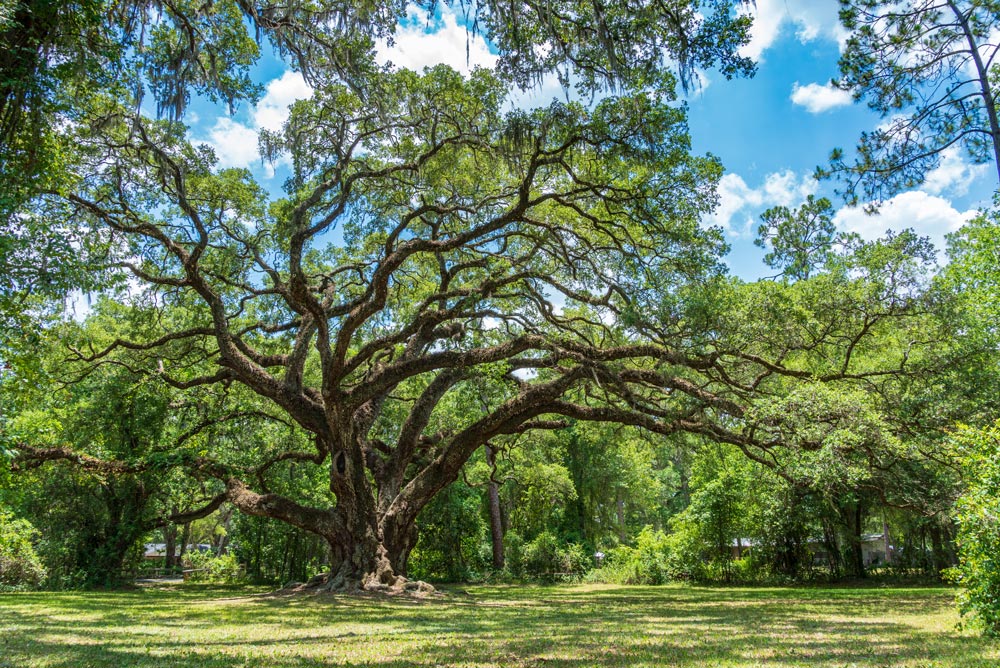
Oak trees are majestic and beloved for their strength and beauty. However, these mighty trees should never be planted close to your home. They can grow up to 100 feet tall with extensive branch systems that mirror their underground root spread.
These massive root systems pose serious risks to your home’s foundation. As the roots grow and expand, they can create pressure against foundation walls and potentially cause cracks or structural issues.
Oak trees are also known for their longevity, often living for hundreds of years. This means any problems they cause will only get worse over time.
Another concern is their water consumption. Oaks are thirsty trees that need lots of water to thrive. When planted too close to your house, they may drain moisture from the soil around your foundation.
The falling acorns can clog gutters and create cleanup challenges around your property. Plus, large branches pose a risk during storms.
If you love oak trees, consider planting them at least 20-30 feet away from your home’s foundation. This gives them plenty of room to grow without threatening your house.
For areas close to your home, better alternatives include smaller ornamental trees like dogwoods or Japanese maples that won’t outgrow their space.
English Ivy (Hedera Helix)
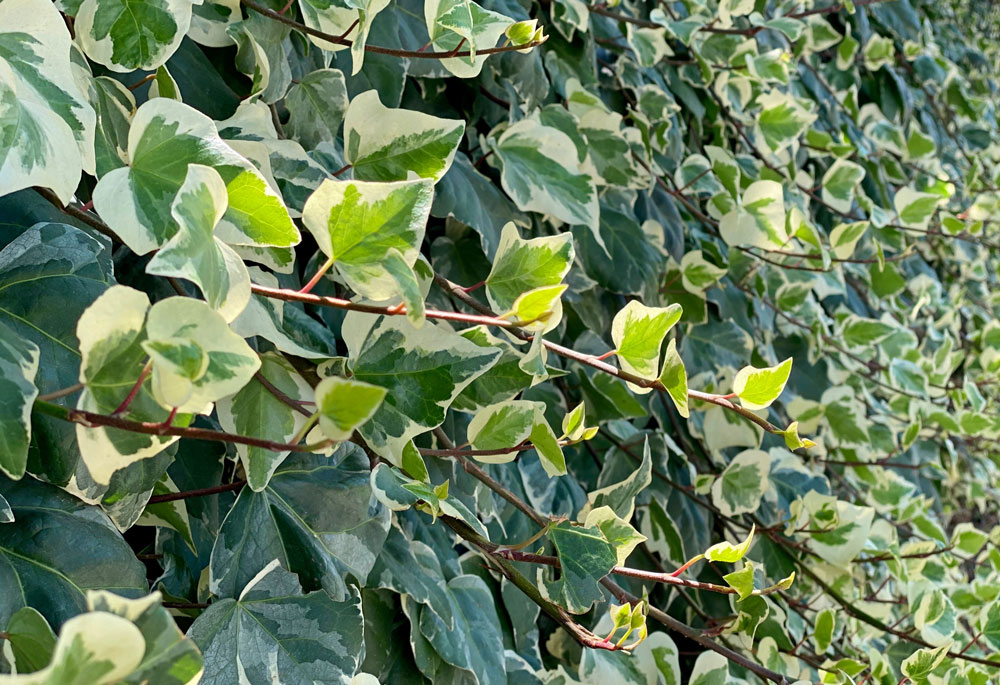
English ivy might look pretty climbing up walls, but it’s one plant you should keep away from your house. This aggressive vine can cause serious damage to buildings over time.
When ivy attaches to walls, its aerial roots can penetrate cracks and mortar joints. This can weaken structures and create pathways for moisture to enter, leading to potential water damage.
Unlike some climbers, English ivy is incredibly persistent. Its waxy leaves repel many herbicides, making it difficult to remove once established. Even small root fragments left behind can quickly regrow.
This plant is also considered invasive in many areas. It forms thick blankets of foliage that can overtake nearby plants and trees, eventually killing them by blocking sunlight.
If you already have ivy growing near your home, it’s best to remove it carefully. Wear protective gloves and long sleeves when handling, as some people develop skin irritation from contact with the plant.
Warning signs to watch for:
- Ivy climbing up your exterior walls
- Shoots appearing in gutters or roof tiles
- Vines growing into window or door frames
For safer alternatives, consider native vines that are less aggressive and won’t damage your home’s structure.
Mimosa Tree (Albizia Julibrissin)
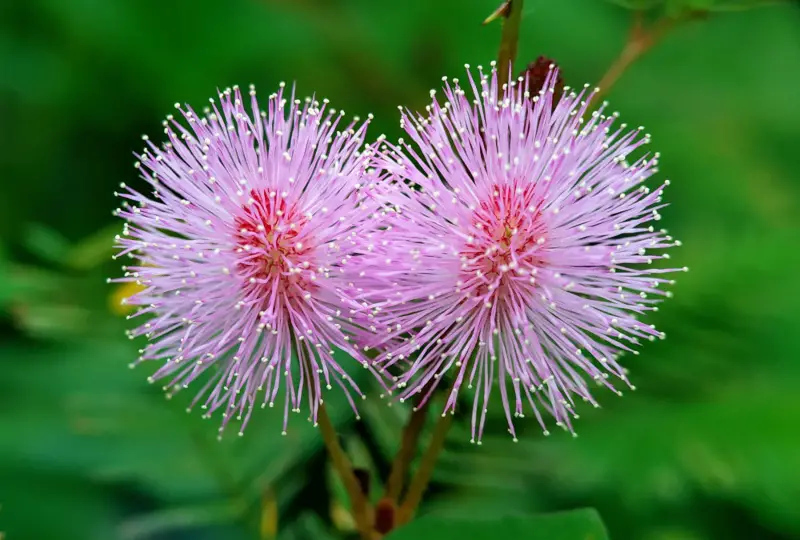
The Mimosa tree might catch your eye with its beautiful pink flowers and feathery leaves, but think twice before planting it near your house. These fast-growing trees can reach heights of 20-40 feet, creating potential problems for your home’s foundation.
Often called the “silk tree,” Mimosas have an umbrella-shaped canopy that looks lovely but can create quite a mess. Many gardeners and horticulturists actually refer to them as “trash trees” because of the constant cleanup they require.
Why keep Mimosa trees away from your house:
- They drop numerous flower petals, seed pods, and leaves
- Their invasive root systems can damage foundations and pipes
- They’re susceptible to diseases that can make them unstable
- They self-seed aggressively, potentially sprouting unwanted trees
Despite their ability to fix nitrogen in the soil (which helps them grow in poor conditions), Mimosas can become a nuisance when planted too close to structures.
While their nectar-rich flowers attract beneficial wildlife like butterflies, hummingbirds, and bees, the maintenance headaches often outweigh these benefits. Their fast growth rate means you’ll soon be dealing with a full-sized tree that could threaten your home’s structural integrity.
If you still love the look of Mimosa trees, consider planting them at the far edge of your property where their roots won’t interfere with your house and their dropped materials won’t create cleanup work.
Siberian Elm (Ulmus Pumila)
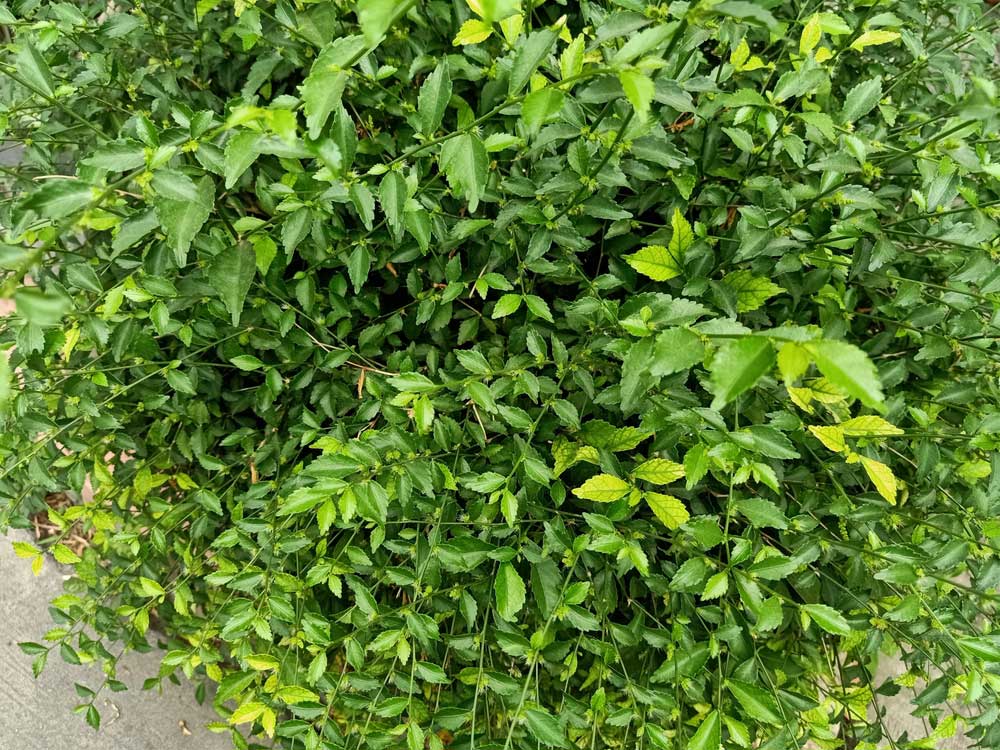
Siberian elm is a fast-growing, hardy tree that might seem like a good choice for your yard, but it’s one to avoid planting near your house. Native to Asia, particularly Siberia and Mongolia, this tree has spread worldwide due to its ability to grow in tough conditions.
While its resilience is impressive, Siberian elm creates major problems when planted close to homes. It can reach heights of 50-75 feet with a rounded crown spreading up to 39 feet wide.
The tree’s rapid growth rate is both a blessing and a curse. It establishes quickly but becomes unmanageable fast. You’ll find it dropping branches, seeds, and debris constantly throughout the year.
Why to keep it away from your house:
- Grows extremely tall (up to 70-75 feet)
- Has very poor resistance to storm damage
- Seeds itself aggressively all over your property
- Creates constant mess with falling debris
- Has poor disease resistance
- Attracts numerous pest insects
Siberian elms should be planted at least 20 feet away from any structures—preferably much farther. Their invasive root systems can damage foundations, and their brittle branches pose hazards during storms.
Despite being marketed sometimes as a quick hedge option, you’re better off choosing a less problematic alternative for your yard. The maintenance headaches and potential property damage aren’t worth the fast growth.
Japanese Knotweed (Fallopia Japonica)
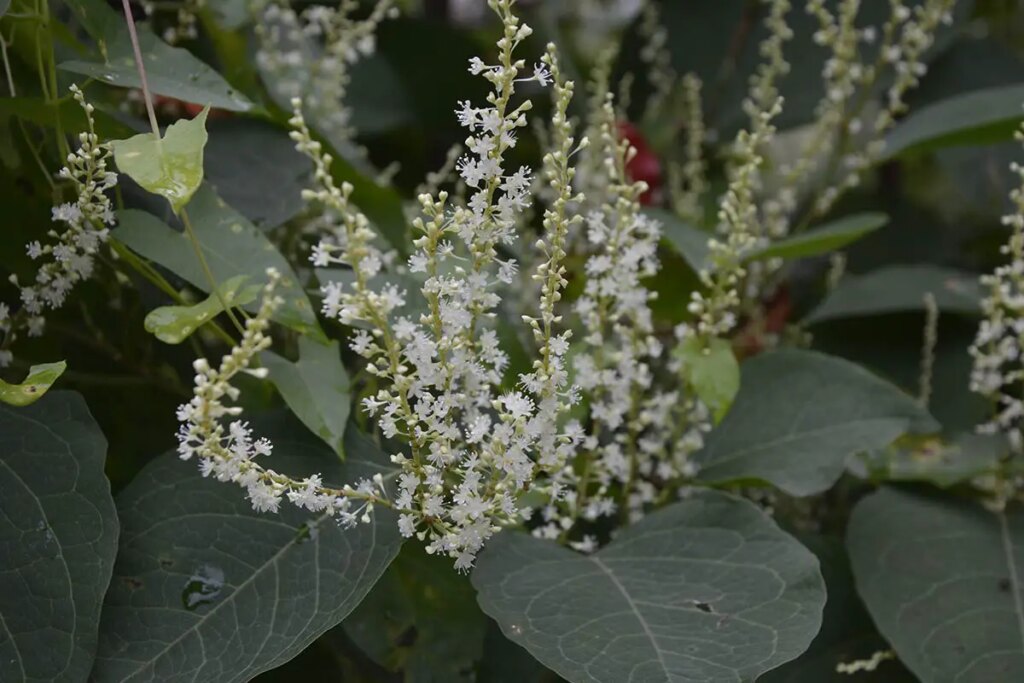
Japanese knotweed is one of the most troublesome plants you could ever have near your home. This invasive perennial spreads alarmingly quickly, with a single stem capable of producing up to 20 new plants each year.
The plant features bamboo-like stems and large, heart-shaped leaves that can grow over six feet tall during summer. Don’t be fooled by its somewhat attractive appearance – it’s a menace to your property!
Japanese knotweed’s aggressive root system is the real problem. Its rhizomes can extend up to 10 feet deep and 23 feet horizontally, potentially damaging foundations, pipes, and driveways.
Having this plant on your property can also affect your home’s value. In some regions, mortgage lenders may refuse loans for properties with knotweed infestations or require expensive professional removal.
Why you should keep it away from your house:
- Can damage foundations, walls, and drainage systems
- Extremely difficult to eradicate once established
- May reduce property value
- Spreads rapidly through underground rhizomes
If you spot Japanese knotweed on your property, consider professional removal services. DIY removal is challenging as even tiny rhizome fragments can regenerate into new plants.
Prevention is your best strategy. Never plant Japanese knotweed and be careful about soil brought to your property that might contain knotweed fragments.
Kudzu (Pueraria Montana)
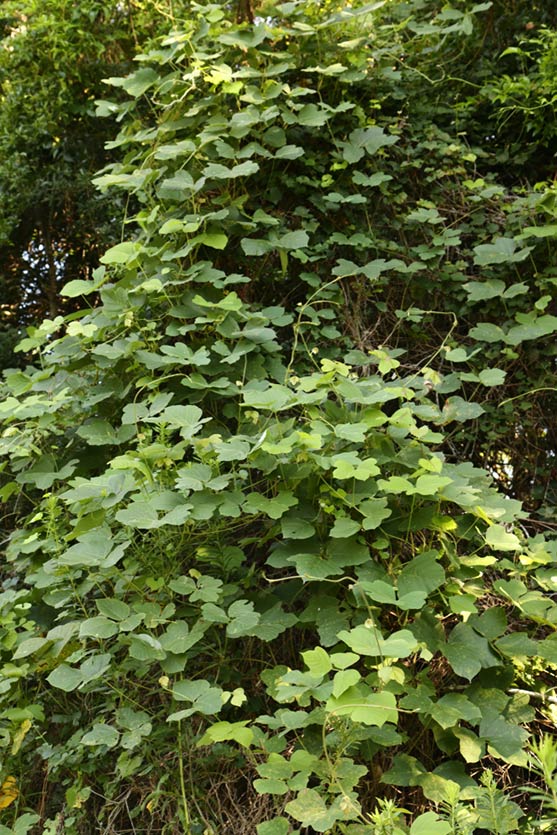
Kudzu is one of the most aggressive plants you should never grow near your home. This fast-growing vine from Asia was once promoted for erosion control, but it quickly became an invasive nightmare across much of the United States.
The vine grows at incredible speeds, earning it nicknames like “the vine that ate the South.” Node-filled runners help kudzu spread rapidly across your property. When these nodes touch soil, they create new root crowns, allowing the plant to multiply quickly.
Kudzu doesn’t discriminate about what it covers. It will smother everything in its path:
- Trees and forests
- Buildings and structures
- Power lines
- Garden plants
- Fences
The plant develops deep taproots that make it extremely difficult to remove once established. Even if kudzu isn’t considered invasive in your specific region, it’s best to avoid planting it entirely.
If you need a climbing vine for your landscape, consider native alternatives that won’t take over your property. These friendlier options provide similar benefits without the risk of an uncontrollable invasion that could damage your home and surrounding vegetation.
Arborvitae (Thuja Spp.)
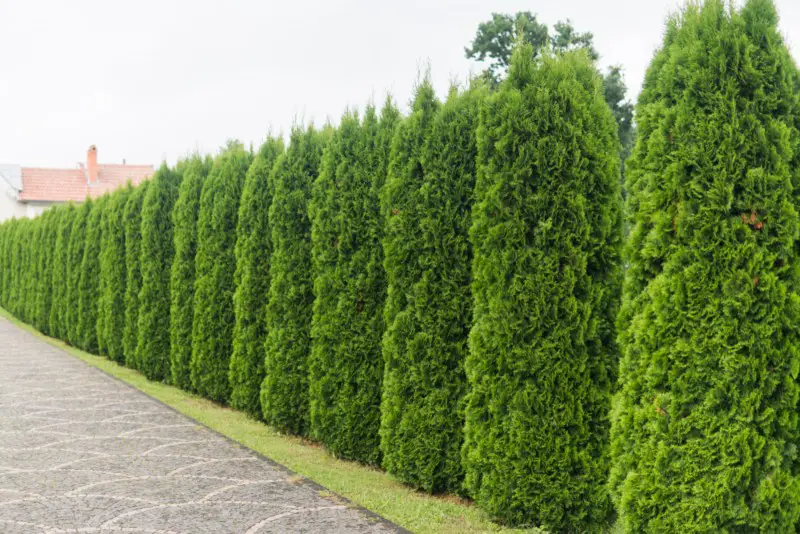
Arborvitae shrubs with their beautiful greenish-gold foliage attract many homeowners. They come in various shapes like pyramidal, columnar, or conical depending on the variety.
But these pretty plants should not be placed too close to your house. As they grow, their spreading branches can cause problems for your home’s structure.
Experts recommend keeping at least 3.5 feet between the center of an Emerald Green Arborvitae and your house wall. This gives enough space to prevent damage.
When planted too close, arborvitae branches may hit your home’s siding. This can cause wear and tear over time.
Another issue is that evergreens like arborvitae can trap moisture against your house when their branches touch the walls. This moisture creates perfect conditions for fungus growth.
Problems with planting arborvitae too close:
- Branches damaging siding
- Increased moisture leading to fungal growth
- Potential root issues near foundation
- Blocked views from windows as they mature
While arborvitae makes lovely privacy screens and windbreaks, remember to give them enough space from your home. Your house and the plants will both be healthier with proper spacing.
Sweet Gum (Liquidambar Styraciflua)
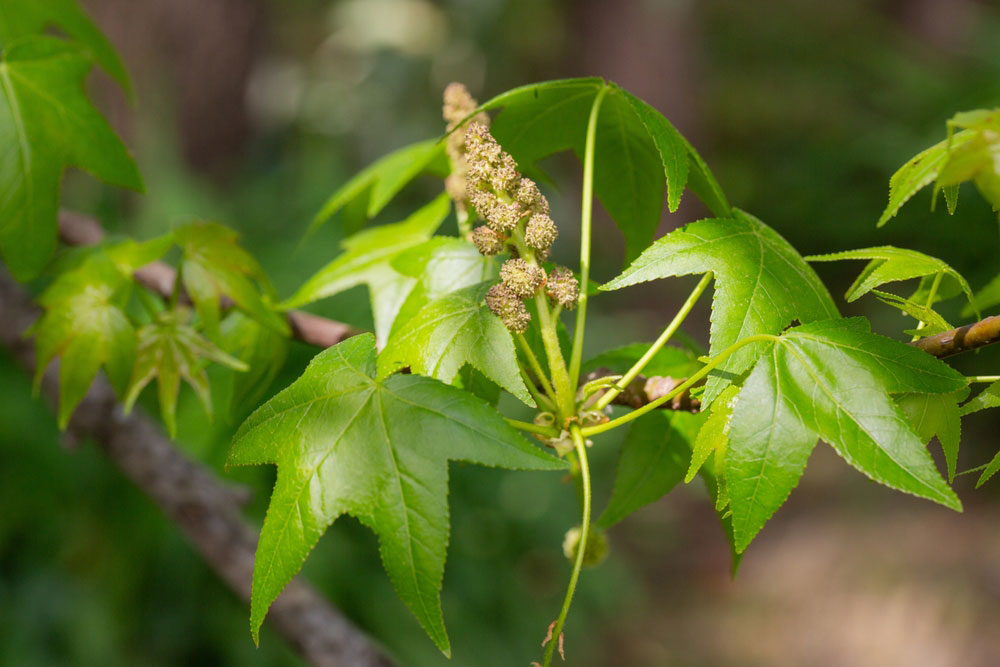
Sweet gum trees, with their star-shaped leaves and stunning fall colors, might catch your eye at the garden center. But think twice before planting one near your home!
These trees can grow impressively tall, reaching 80-120 feet in height with a spread of about 60 feet. In good conditions, they can grow up to 2 feet per year, making them fast-growing shade trees.
The main problems with planting sweet gums close to your house:
- Aggressive, invasive root systems that spread widely and grow near the surface
- Potential damage to sidewalks, patios, foundations, and septic systems
- Those infamous spiky seed balls that drop year-round (a hazard for bare feet!)
The roots are particularly troublesome – they grow fast and large, sometimes compared to “tentacles on a giant squid.” These roots actively seek water sources and can damage your home’s foundation.
While sweet gum trees make beautiful street trees and can provide nice shade, their drawbacks make them poor choices for planting near structures.
If you love the look of sweet gums, consider planting one in a more distant part of your yard where its roots won’t threaten your home and those prickly seed balls won’t litter your walkways.
Japanese Barberry (Berberis Thunbergii)
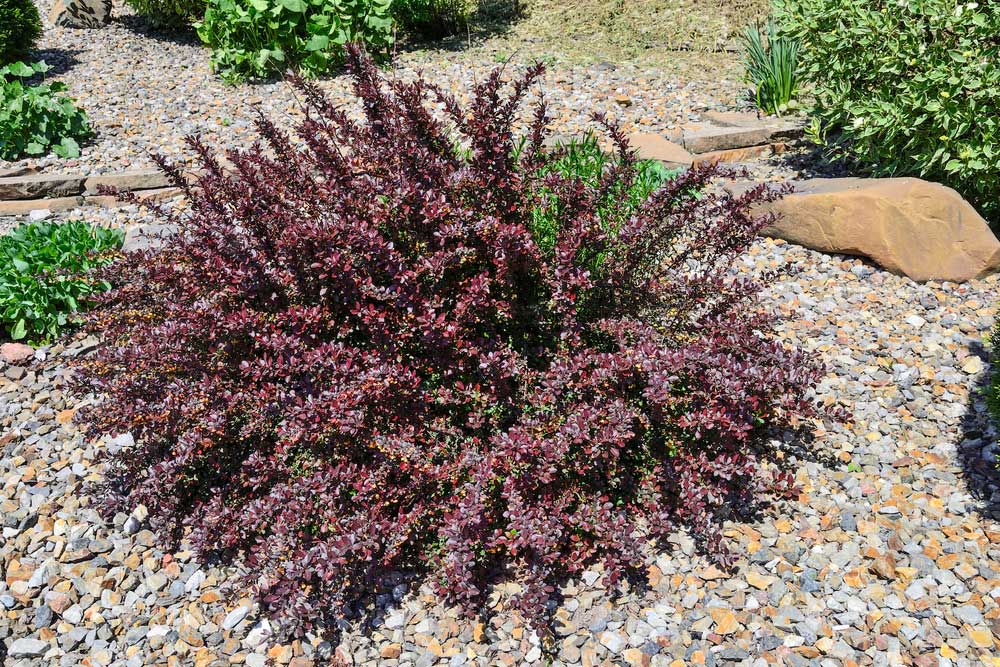
Japanese barberry is a hardy deciduous shrub that might look attractive with its colorful fall foliage, but it deserves caution when planting near your home. This ornamental plant, which grows up to 6 feet tall, has become invasive in many parts of the United States since its introduction in 1875.
The shrub’s sharp thorns pose a hazard, especially if planted along walkways or near areas where children play. These thorns can make maintenance difficult and potentially scratch house siding when the plant grows too close.
Beyond its thorny nature, Japanese barberry has a tendency to spread aggressively. It can take over open areas quickly, crowding out native plants and disrupting local ecosystems.
Why keep it away from your house:
- Sharp thorns can damage siding and make maintenance difficult
- Invasive growth habit requires constant pruning
- Creates ideal habitat for ticks, increasing Lyme disease risk
- Red berries can stain sidewalks and house foundations
If you already have Japanese barberry on your property, consider replacing it with native alternatives. Many garden centers now offer non-invasive options that provide similar aesthetic benefits without the drawbacks.
When managing existing plants, wear protective gloves and clothing to avoid scratches from the thorns. Regular pruning will help control its spread and keep it from encroaching on your home’s foundation.
Giant Hogweed (Heracleum Mantegazzianum)
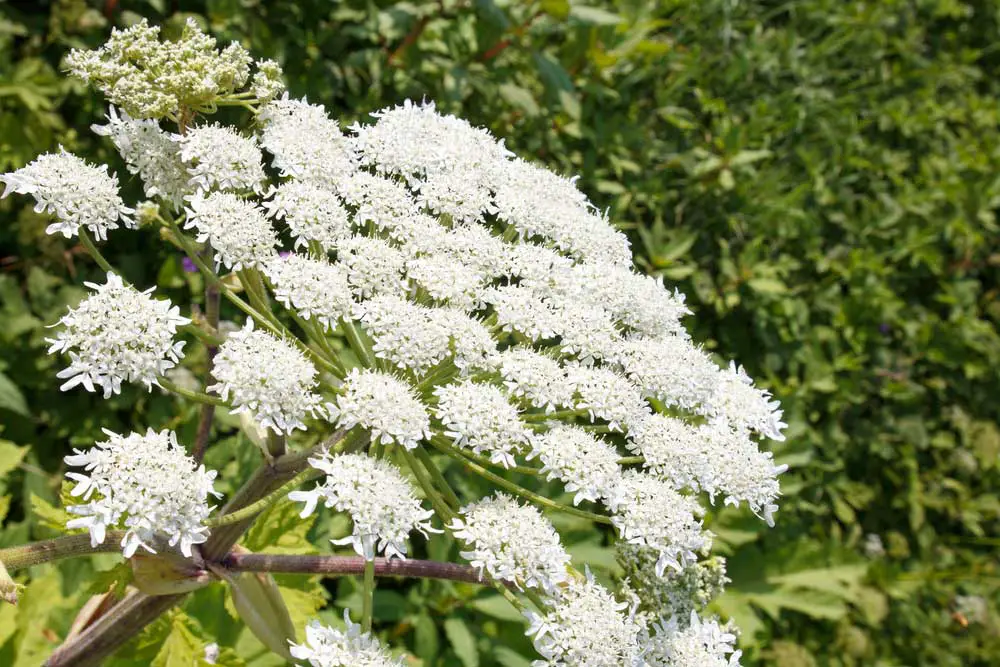
Giant hogweed is a dangerous plant you should never grow near your home. This towering plant can reach heights of over 8 feet tall and features large white flower clusters that might look attractive, but don’t be fooled.
The biggest danger comes from its sap, which contains chemicals that make your skin extremely sensitive to sunlight. If the sap touches your skin and then you go in the sun, you can develop severe blisters and burns.
Giant hogweed is actually classified as a federal noxious weed in the United States because of how harmful and invasive it is. It spreads easily and can take over areas quickly.
You might confuse it with cow parsnip, a native plant that looks similar. The key differences are that giant hogweed is taller, has more deeply cut leaves, and has more dangerous sap.
If you spot this plant on your property, don’t try to remove it yourself. Contact local authorities or weed control experts who have the proper equipment to handle it safely.
Warning signs of giant hogweed:
- Extremely tall (8-14 feet when mature)
- Large, umbrella-shaped white flower clusters
- Huge leaves (up to 5 feet wide)
- Purple-spotted, bristly stems
- Prefers moist soil and sunny areas

